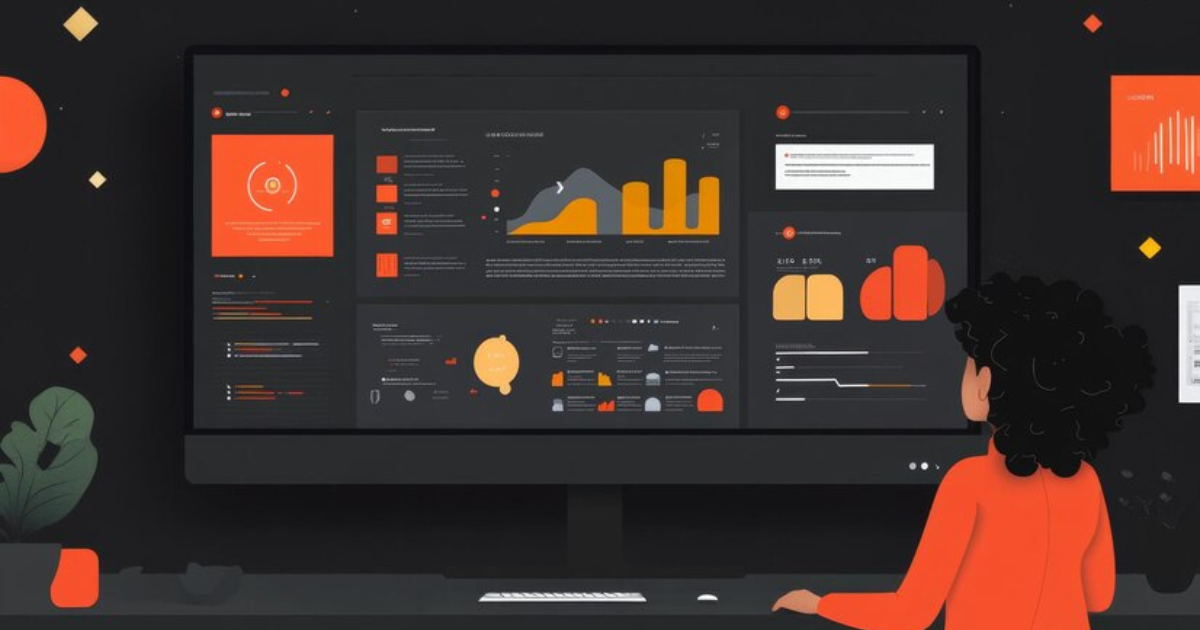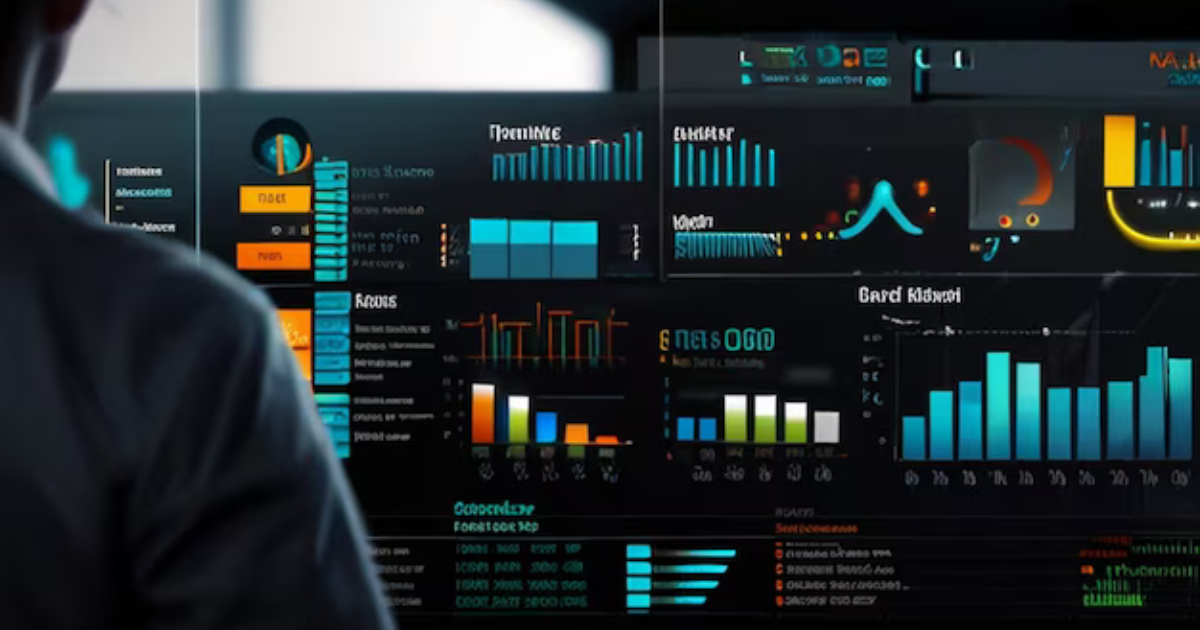
In the age of data-driven decision-making, businesses require robust tools to transform raw data into actionable insights. Power BI, a product of Microsoft, has emerged as one of the most versatile and powerful business intelligence tools available. A key feature that sets Power BI apart is its dashboards, which allow users to visualize data in real-time, helping companies track performance, identify trends, and make informed decisions.
This article explores what makes best Power BI dashboards exceptional and highlights some of the best types of dashboards that can revolutionize your data analytics processes.
What is a Power BI Dashboard?
A Power BI dashboard is a single-page, highly visual representation of data, built from multiple reports or datasets. It consolidates data from various sources, providing a unified view of key metrics and KPIs (Key Performance Indicators). The dashboards are interactive, allowing users to dive deeper into the data through drill-down capabilities and live data connections.
The key features that make Power BI dashboards stand out include:
Real-time Data Integration: Power BI supports real-time data streaming, which enables users to monitor their data as it is generated, without the need for manual updates.
Customizable Visuals: Users can choose from a wide variety of visuals, such as bar charts, pie charts, maps, and gauges, to represent their data most effectively.
Interactive Reports: Dashboards are interactive, allowing users to drill down into data points to uncover additional insights.
Cross-device Compatibility: Power BI dashboards are accessible on desktops, tablets, and mobile devices, enabling on-the-go data analysis.
Data Connectivity: Power BI supports connections to multiple data sources, including Excel, SQL Server, Google Analytics, Salesforce, and many more.
Importance of Choosing the Right Power BI Dashboard
Selecting the right dashboard depends on your organization’s goals and the specific insights you wish to derive. Whether you are tracking sales performance, monitoring employee productivity, or analyzing customer behavior, Power BI offers dashboards suited to different business needs.
The best Power BI dashboards are:
Clear and concise: They avoid information overload and focus on delivering key insights.
Visually appealing: They use colors and charts that enhance understanding rather than confuse users.
Actionable: They provide data in a manner that leads to actionable insights for decision-making.
Best Power BI Dashboards for Different Use Cases
1. Sales and Revenue Dashboard
Purpose: To monitor sales performance, revenue growth, and profitability metrics in real-time.
Key Metrics:
Total revenue
Monthly sales growth
Sales by region or product
Profit margins
Customer acquisition rates
This dashboard allows sales teams to track their performance against targets and identify trends in revenue generation. By incorporating visuals like bar charts, line graphs, and pie charts, businesses can gain insights into which regions, products, or services are driving sales growth. Additionally, sales managers can use this dashboard to evaluate team performance and reallocate resources as necessary.
Example Use Case: A retail company can use a sales and revenue dashboard to monitor performance across different store locations, helping them optimize inventory and marketing strategies for underperforming stores.
2. Financial Performance Dashboard
Purpose: To provide a comprehensive view of a company’s financial health, including revenue, expenses, cash flow, and net income.
Key Metrics:
Revenue vs. expenses
Net profit margin
Cash flow forecast
Debt-to-equity ratio
Budget variance
This dashboard is essential for CFOs and finance teams, offering a snapshot of the company’s financial position at any given time. With real-time financial data, businesses can identify cash flow issues, measure profitability, and compare actual performance to financial forecasts.
Example Use Case: A SaaS (Software as a Service) company can use this dashboard to monitor subscription revenue, operational costs, and overall financial health, enabling better planning for future growth and investment.
3. Human Resources Dashboard
Purpose: To track employee-related metrics, including headcount, employee turnover, and productivity.
Key Metrics:
Employee count by department
Turnover rates
Employee satisfaction scores
Absenteeism trends
Training and development progress
The HR dashboard is invaluable for HR managers, allowing them to monitor employee performance, satisfaction, and engagement levels. This dashboard can also be used to track recruitment efforts and ensure the organization is meeting diversity and inclusion goals.
Example Use Case: A large corporation can use the HR dashboard to track turnover rates and identify departments with high employee churn, enabling them to take corrective actions like improving workplace conditions or offering better benefits.
4. Marketing Performance Dashboard
Purpose: To assess the effectiveness of marketing campaigns and overall brand performance.
Key Metrics:
Customer acquisition cost (CAC)
Return on marketing investment (ROMI)
Website traffic
Conversion rates
Social media engagement
This dashboard helps marketing teams monitor their campaign performance in real-time, adjusting strategies on the fly based on what is working and what isn’t. It also provides insights into customer engagement, allowing businesses to optimize their marketing strategies for maximum ROI.
Example Use Case: An e-commerce company can use a marketing performance dashboard to measure the effectiveness of email campaigns, social media ads, and SEO efforts, helping them refine strategies to drive more conversions.
5. Customer Support Dashboard
Purpose: To monitor and optimize customer service and support operations.
Key Metrics:
Number of tickets resolved
Average resolution time
Customer satisfaction (CSAT) score
Support team productivity
Most common issues
This dashboard helps support teams track customer service performance and ensure a high level of customer satisfaction. By tracking metrics like ticket resolution times and common customer issues, businesses can identify areas for improvement in their support processes.
Example Use Case: A tech company offering customer support for its software products can use this dashboard to monitor response times, resolve issues quickly, and improve overall customer satisfaction.
6. Project Management Dashboard
Purpose: To keep track of project progress, budgets, and resource allocation.
Key Metrics:
Project timeline and milestones
Budget vs. actual expenses
Resource utilization
Task completion rates
Risk assessment
Project managers rely on this dashboard to monitor the status of ongoing projects, identify potential risks, and ensure the project stays on track and within budget. It helps teams ensure timely completion by highlighting bottlenecks and underperforming tasks.
Example Use Case: A construction company can use this dashboard to manage large-scale projects, tracking milestones, costs, and resource allocation, ensuring that each project remains on time and within budget.
How to Build the Best Power BI Dashboards
While Power BI provides immense flexibility in creating dashboards, there are best practices to ensure your dashboard is both effective and user-friendly.
Define Your Audience and Purpose: Understand who will be using the dashboard and what they need to achieve. For example, a CEO might be interested in high-level KPIs, while a sales manager may need detailed metrics on sales performance.
Choose the Right Visuals: Power BI offers many visual options, but it’s important to choose visuals that represent data clearly. Avoid cluttering the dashboard with too many visuals or too much data.
Organize Your Dashboard Layout: Place the most critical metrics and visuals at the top of the dashboard, ensuring they are easy to locate and interpret.
Use Filters and Slicers: Interactive filters allow users to adjust the data displayed, making the dashboard more dynamic and customizable.
Leverage Power BI Templates: Power BI offers a variety of pre-built dashboard templates. These can save time and provide inspiration for new users building dashboards.
Conclusion
Power BI dashboards are a game-changer for organizations looking to harness the power of their data. From tracking sales and financial performance to monitoring marketing campaigns and customer service, the possibilities are endless. The best Power BI dashboards are those that are clear, concise, and actionable, helping decision-makers at all levels of the organization make informed choices in real time.
By selecting the right dashboard for your needs and following best practices in design, you can maximize the value of Power BI and gain deeper insights into your business operations.
Original Source Url : Best Power BI Dashboards: A Comprehensive Guide








Write a comment ...